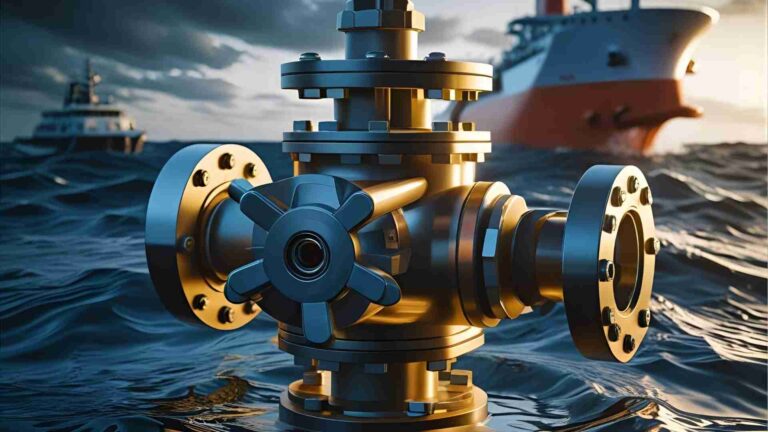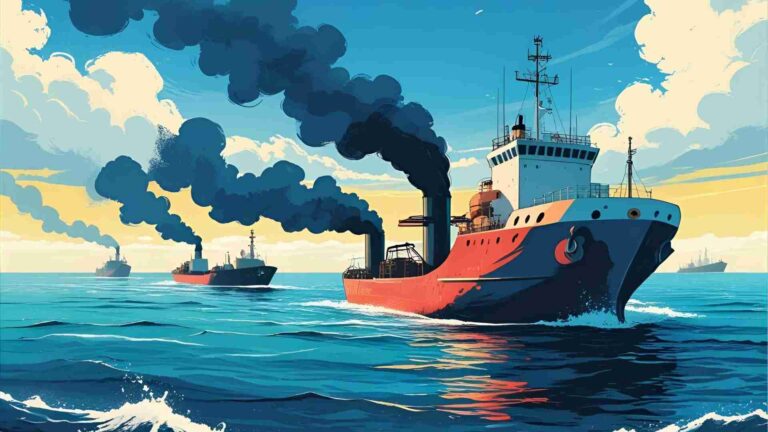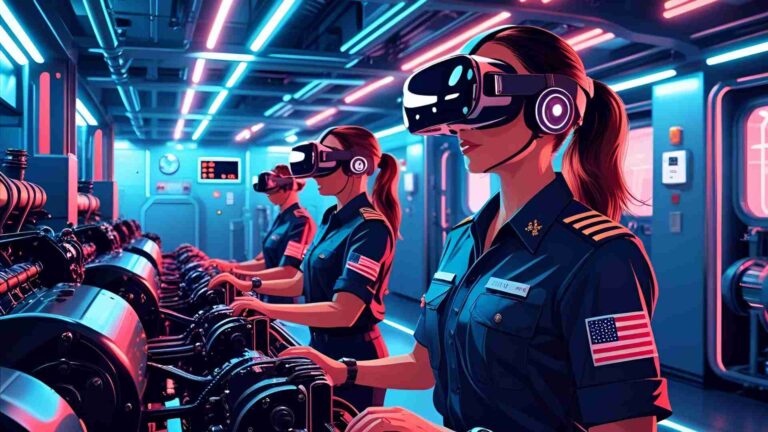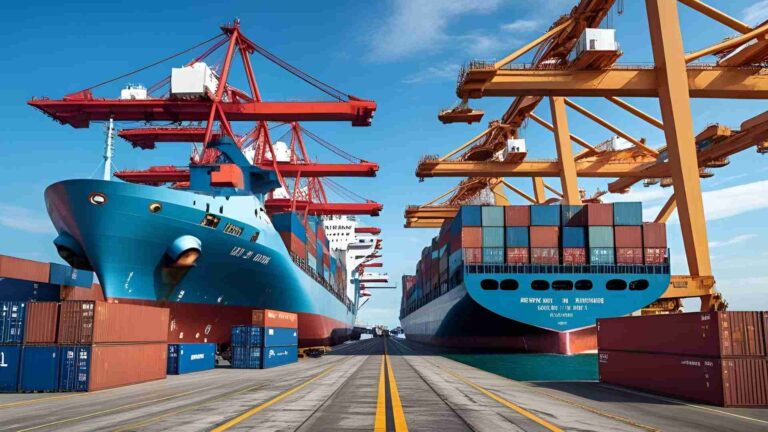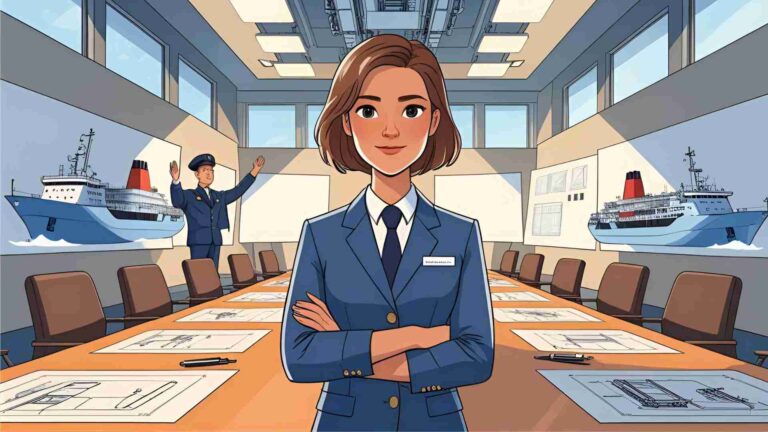Career Development for Seafarers: Building Skills
Discover career development for seafarers: key skills, certifications, and paths to advance in the maritime industry, both at sea and ashore.
The maritime industry is a dynamic and challenging field that offers diverse career opportunities for seafarers. From entry-level roles like Ordinary Seaman to senior positions such as Captain or Chief Engineer, and even shore-based careers in port management or maritime law, the industry rewards those who invest in continuous learning and skill development. This article explores how seafarers can build essential skills, pursue certifications, and navigate career paths to achieve long-term success in the maritime sector.
Introduction to Seafaring Careers
Seafaring is more than just a job; it’s a lifestyle that demands resilience, adaptability, and a commitment to professional growth. The maritime industry is evolving rapidly, driven by technological advancements, stricter environmental regulations, and global trade demands. Seafarers must stay ahead by developing technical expertise, soft skills, and industry-recognized certifications to remain competitive and advance in their careers.
Whether you aspire to climb the ranks onboard a vessel or transition to a shore-based role, career development is critical. This guide provides a comprehensive roadmap for seafarers, covering essential skills, training programs, certifications, and strategies for success in the maritime industry.
Career Paths in the Maritime Industry
Seafaring careers offer structured progression paths, from entry-level positions to senior officer roles and shore-based opportunities. Below is an overview of the typical career trajectory for seafarers, including both onboard and ashore roles.
Entry-Level Positions
Most seafarers begin their careers in entry-level roles such as:
- Ordinary Seaman (OS): Works in the deck department, performing tasks like cleaning, painting, and assisting with mooring operations. This role requires basic training and provides foundational experience.
- Wiper: An entry-level position in the engine department, responsible for cleaning and maintaining machinery under the supervision of engineers.
These roles require minimal experience but serve as stepping stones to more advanced positions. Seafarers gain practical sea time and familiarity with ship operations, which are critical for career advancement.
Advancement to Able Seaman (AB)
After gaining sufficient sea time (typically 12-18 months) and completing additional training, an Ordinary Seaman can progress to an Able Seaman (AB). This role involves more specialized tasks, such as operating deck equipment, standing watch, and assisting with navigation.
- Requirements: STCW certifications, sea time, and often a proficiency exam.
- Skills Developed: Knot-tying, steering, and maintenance of deck equipment.
Officer Roles (Deck and Engine Departments)
Advancing to officer roles requires significant training, certifications, and sea time. The progression typically follows this hierarchy:
- Third Officer/Third Engineer: Entry-level officer roles responsible for navigation (deck) or engine room operations (engine).
- Second Officer/Second Engineer: Takes on more complex responsibilities, such as chart corrections or engine maintenance planning.
- Chief Officer/Chief Engineer: Senior roles overseeing deck or engine department operations.
- Captain/Chief Engineer (Senior): The highest onboard positions, responsible for overall vessel operations and safety.
- Requirements: Officer of the Watch (OOW) certification, advanced STCW courses, and extensive sea time (often 36 months or more for senior roles).
- Certifications: Electronic Chart Display and Information System (ECDIS), Global Maritime Distress and Safety System (GMDSS), and Engine Room Simulator Training.
Shore-Based Roles
After years at sea, many seafarers transition to shore-based roles, leveraging their experience and additional qualifications. Common shore-based careers include:
- Fleet Manager: Oversees operations of multiple vessels, ensuring compliance with safety and regulatory standards.
- Marine Superintendent: Monitors vessel performance and compliance with environmental and operational regulations.
- Maritime Consultant: Advises companies on safety, compliance, and fleet management.
- Port Operations Manager: Manages logistics, cargo handling, and port efficiency.
- Maritime Trainer: Educates the next generation of seafarers at maritime academies.
- Requirements: Specialized degrees (e.g., maritime management, naval architecture) or certifications, combined with extensive onboard experience.
The following chart illustrates a typical career progression for a seafarer in the deck department:

Key Aspects of Career Development
To succeed in the maritime industry, seafarers must focus on several key areas: training, experience, networking, continuous learning, skills development, mentorship, and adaptability.
1. Training and Certifications
The Standards of Training, Certification, and Watchkeeping (STCW) convention sets the global benchmark for seafarer training. STCW certifications cover essential skills like firefighting, first aid, survival techniques, and security awareness. Additional certifications can enhance employability and open doors to specialized roles.
| Certification | Purpose | Career Impact |
|---|---|---|
| STCW Basic Training | Ensures competency in safety, firefighting, and first aid | Mandatory for all seafarers |
| GMDSS | Enables operation of communication and distress systems | Essential for deck officers |
| ECDIS | Trains seafarers in electronic navigation systems | Critical for modern navigation roles |
| Engine Room Simulator | Simulates engine room operations | Valuable for engine department roles |
| Safety Officer Training | Focuses on onboard safety compliance | Opens roles in safety management |
| Vessel Management Systems (VMS) | Covers digital fleet management tools | Enhances prospects for supervisory roles |
- Cost Estimate: STCW Basic Training costs $800-$1,200; advanced certifications like GMDSS or ECDIS range from $500-$2,000, depending on the training provider.
- Recommendation: Enroll in accredited maritime training institutes, such as the Seafarers Harry Lundeberg School of Seamanship, which offers comprehensive programs for aspiring mariners.
2. Experience
Sea time is a critical factor in career progression. Most officer roles require a minimum of 12-36 months of documented sea time, depending on the position. Practical experience builds confidence, hones technical skills, and demonstrates competence to employers.
- Tip: Maintain a detailed logbook of sea time and tasks performed to support certification applications.
3. Networking
Building professional relationships is vital for career growth. Attending maritime conferences, joining associations like the International Maritime Organization (IMO), or engaging with colleagues can lead to job opportunities and industry insights.
- Tip: Join platforms like Martide, a maritime jobs app, to connect with employers and manning agencies.
4. Continuous Learning
The maritime industry is shaped by technological advancements and regulatory changes. Seafarers must stay updated on:
- Technological Advancements: Familiarity with Vessel Management Systems (VMS), real-time performance monitoring, and automation tools.
- Environmental Regulations: Knowledge of IMO regulations, such as MARPOL, which governs emissions and sustainability.
- Recommendation: Participate in online courses and webinars offered by platforms like Coursera or maritime training institutes.
5. Skills Development
Seafarers need a blend of technical and soft skills to excel:
- Technical Skills: Navigation, engine maintenance, and familiarity with digital tools like ECDIS.
- Soft Skills: Communication, teamwork, problem-solving, and emotional resilience are critical for working in diverse, high-pressure environments.
6. Mentorship
Guidance from experienced professionals can shape career decisions. Mentors provide advice on certifications, career paths, and industry trends.
- Tip: Seek mentorship through formal programs or informal connections with senior officers onboard.
7. Adaptability
The maritime industry evolves rapidly, with new technologies and regulations reshaping operations. Seafarers must embrace change and be willing to learn new systems and practices.
Essential Skills for Career Advancement
To advance in the maritime industry, seafarers should focus on developing the following skills:
Technical and Operational Skills
Modern ships rely on advanced technologies, such as:
- Navigation Systems: ECDIS and radar systems for precise navigation.
- Engine Room Operations: Knowledge of automated systems and maintenance protocols.
- Vessel Management Systems: Tools for monitoring fuel efficiency, emissions, and performance.
- Training Recommendation: Enroll in courses like Engine Room Simulator Training ($1,500-$2,500) or ECDIS certification ($800-$1,500).
Leadership and Management
As seafarers progress to officer roles, leadership skills become essential. Key competencies include:
- Decision-Making: Making critical decisions under pressure, such as navigating through storms.
- Team Management: Leading diverse crews and resolving conflicts.
- Strategic Planning: Overseeing vessel operations and compliance.
- Training Recommendation: Leadership courses offered by maritime academies ($500-$1,000).
Soft Skills and Communication
Effective communication is vital in multinational crews. Seafarers must:
- Communicate Clearly: Ensure instructions are understood across language barriers.
- Resolve Conflicts: Mediate disputes to maintain a cohesive team.
- Demonstrate Emotional Resilience: Handle the isolation and stress of long voyages.
- Tip: Practice active listening and cross-cultural communication to foster teamwork.
Certifications That Boost Career Prospects
Certifications validate skills and increase employability. Below is a detailed look at key certifications and their benefits:
| Certification | Duration | Cost | Career Benefit |
|---|---|---|---|
| STCW Advanced Firefighting | 5 days | $800-$1,200 | Enhances safety expertise |
| GMDSS | 10 days | $1,000-$2,000 | Essential for communication roles |
| ECDIS | 5 days | $800-$1,500 | Required for navigation officers |
| Medical Care | 5 days | $600-$1,000 | Prepares for medical emergencies |
| VMS Certification | 3-5 days | $500-$1,000 | Positions for digital fleet management roles |
- Where to Enroll: Institutions like the Seafarers Harry Lundeberg School of Seamanship offer tuition-free programs for U.S. Merchant Mariners, though additional costs (e.g., uniforms, exams) may apply ($200-$500).
Career Growth Opportunities
The maritime industry offers diverse opportunities for growth, both onboard and ashore.
Climbing the Ranks Onboard
A typical progression in the deck department might look like this:
- Ordinary Seaman: Starting salary of $2,000-$3,000/month.
- Able Seaman: $3,000-$4,500/month with additional responsibilities.
- Third Officer: $4,500-$6,000/month, requiring OOW certification.
- Second Officer: $6,000-$8,000/month, with advanced navigation duties.
- Chief Officer: $8,000-$12,000/month, overseeing deck operations.
- Captain: $12,000-$20,000/month, responsible for the entire vessel.
- Engine Department Equivalent: Wiper → Assistant Engineer → Third Engineer → Second Engineer → Chief Engineer.
Shore-Based Opportunities
Shore-based roles often require advanced education or certifications but offer stability and work-life balance. Examples include:
- Fleet Manager: $60,000-$100,000/year, managing vessel operations.
- Port Operations Manager: $70,000-$120,000/year, overseeing logistics.
- Maritime Consultant: $80,000-$150,000/year, advising on compliance and safety.
- Education Requirement: A bachelor’s degree in maritime management or naval architecture ($10,000-$50,000 for a degree program) is often required.
Preparing for the Future
To build a sustainable career, seafarers must adopt proactive strategies:
Networking
Engage with industry professionals through:
- Conferences: Attend events like the International Maritime Organization’s annual meetings.
- Associations: Join groups like the Nautical Institute or the Seafarers International Union (SIU).
- Online Platforms: Use Martide to connect with employers offering roles from Fitter to Chief Engineer.
Online Learning
Online courses provide flexibility for seafarers. Platforms like Coursera and maritime institutes offer courses on:
- Emerging Technologies: Automation, AI in shipping, and green energy solutions.
- Regulatory Compliance: MARPOL, SOLAS, and other IMO standards.
- Cost: $50-$500 per course, depending on the provider.
Mentorship
Mentors provide guidance on certifications, career transitions, and industry trends. Seek mentors through:
- Formal Programs: SIU’s mentorship initiatives.
- Informal Connections: Senior officers or shore-based professionals.
Drug Testing and Physical Demands
The maritime industry has strict requirements for drug testing and physical fitness, as outlined by the U.S. Coast Guard and the Seafarers Harry Lundeberg School of Seamanship.
Drug Testing Requirements
- Pre-Employment Testing: Mandatory for all seafarers, including apprentices. Tests screen for marijuana, prescription medications, and DOT-banned substances.
- Periodic Testing: Required every six months unless random testing occurs onboard for at least 60 days within 185 days.
- Cost: $50-$100 per test, often covered by employers or training programs.
- Note: Marijuana and CBD oil are prohibited under federal law, even if legal in some states.
Physical Demands
Seafaring is physically demanding, requiring:
- Strength and Stamina: Tasks like mooring, maintenance, and cargo handling.
- Medical Fitness: Regular evaluations to ensure seafarers can work in remote environments without immediate medical access.
- Recommendation: Consult a physician to assess suitability for maritime work, especially for those with chronic conditions.
Case Study: Seafarers Harry Lundeberg School of Seamanship
The Seafarers Harry Lundeberg School of Seamanship, part of the Paul Hall Center for Maritime Training and Education, is a premier institution for aspiring U.S. Merchant Mariners. Its Unlicensed Apprentice Program offers:
- Tuition: Free for eligible applicants.
- Additional Costs: Uniforms ($200-$300), U.S. Coast Guard fees ($140), and TWIC card ($125).
- Program Structure: Combines classroom training, sea time, and certifications like STCW Basic Training.
- Eligibility: Applicants must pass drug tests, physical exams, and dental evaluations.
The program prepares seafarers for entry-level roles and provides a clear path to officer positions, making it an excellent starting point for career development.
Conclusion
Career development for seafarers is a journey of continuous learning, skill-building, and adaptability. By pursuing certifications like STCW, GMDSS, and ECDIS, gaining sea time, and developing leadership and soft skills, seafarers can climb the ranks onboard or transition to rewarding shore-based roles. Networking, mentorship, and staying updated on industry trends are equally important for long-term success.
The maritime industry offers vast opportunities for those willing to invest in their professional growth. Whether you’re an Ordinary Seaman aiming to become a Captain or a seasoned mariner exploring shore-based careers, a commitment to lifelong learning will ensure a thriving career in this dynamic field.
Happy Boating!
Share Career Development for Seafarers: Building Skills with your friends and leave a comment below with your thoughts.
Read Essential Health Tips for Crew Members During Long Voyages until we meet in the next article.

